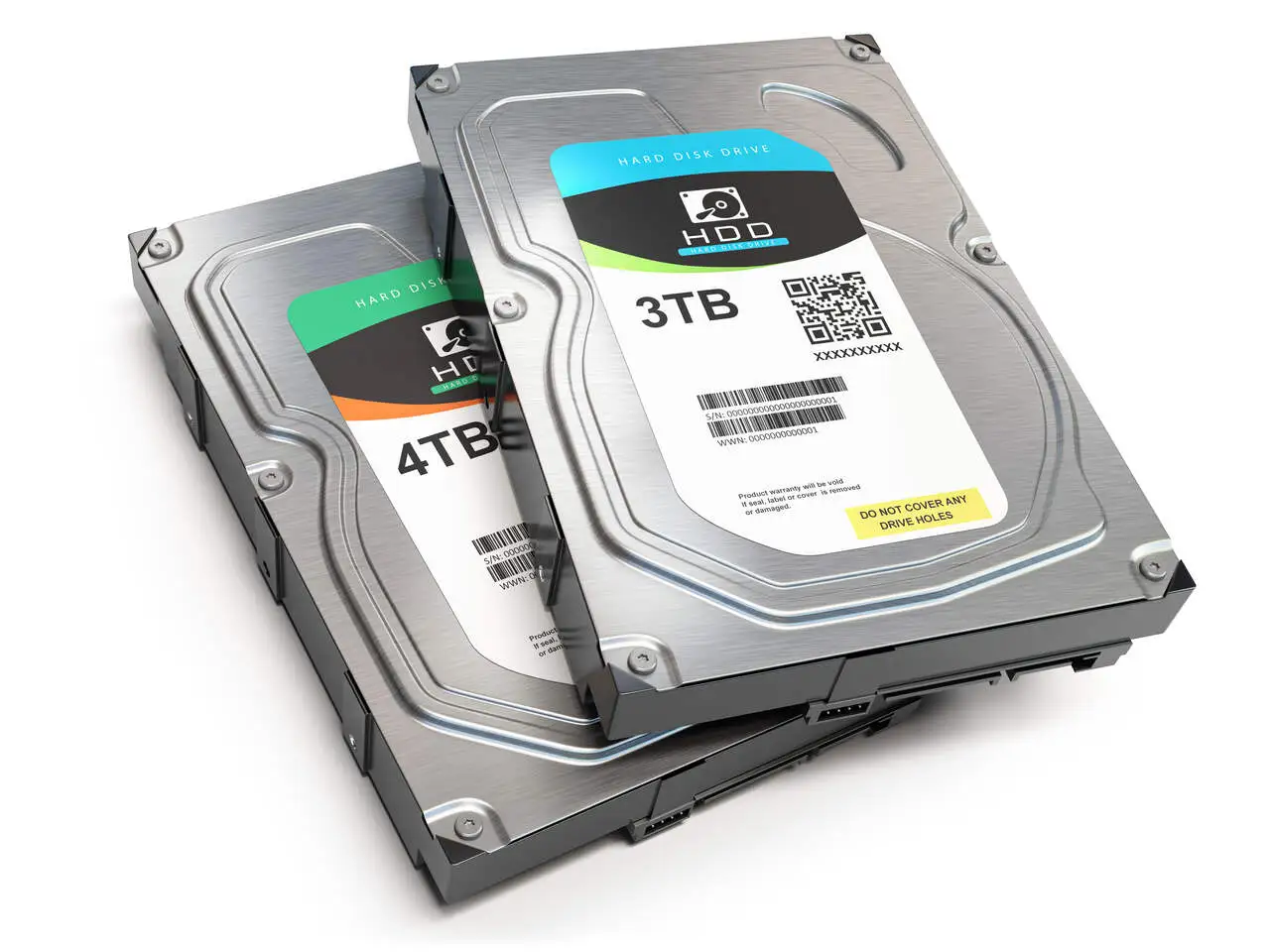Fifty-eight years ago, when it measured 14×8 inches, the hard disc, popularly known as HD, bore the responsibility of storing all the information in a system.
That’s why, rather than having a super video card, a powerful processor or a lot of memory space, you need to invest in a good hard drive to safely store these resources.
The hard drive is key to data storage, it’s safe and quick to access stored data. We’re inclined to trust what we know, so before you know how to care for your hard drive, you need to know how it works.
How does a hard drive work?
The hard drive is a mechanical device and to understand how it works it is important to know its components, which are: the recording disc or platter, the read head, the arm and the actuator.
These are the most important parts of the hard drive. Let’s look at each of them separately.
Recording disc or platter
All the information is recorded on it. It is made of aluminium and coated on both sides with a magnetic material. Some hard drives can have more than one disc, they sit on top of each other but don’t touch.
There are numerous lines on the disc, invisible to the naked eye, which act as “drawers” for storing information. The information is recorded while the disc rotates at a speed of between 5,600 and 7,200 RPM. In some more advanced HDDs, this speed can be higher.
The disc is extremely sensitive, any touch can result in data loss, so the alignment of the parts needs to be perfect.
Reading head
The read head is responsible for both reading and writing information. The read head needs to be perfectly aligned so that it doesn’t touch the platter; knocks and bumps on the hard drive directly affect this alignment, which is one of the main reasons for data loss on the hard drive.
To give you an idea of how millimetrically it needs to be aligned, the distance between the read disc and the read head is less than the thickness of a strand of hair.
Arm
It is responsible for moving the read head across the disc. Its function is relatively simple. It needs to move very quickly.
Actuator
It is responsible for moving the arm and keeping it aligned.
But just like any piece of equipment, the hard drive must be preserved and optimised. Special care is needed to minimise the risk of the device failing and the user losing all their information. So we’ve listed 3 stages where people have the most doubts about how to care for a hard drive, from purchase to use:
Take care when buying a hard drive
When it comes to buying a hard drive, it’s common for users to pay attention only to issues such as brand and storage capacity, but the technology used to manufacture the hard drive says much more about its performance.
If the hard disc is not based on current technology, this will affect speed, performance and security.
It’s therefore essential to make sure that the hard drive you’re buying is compatible with your computer. After all, there’s no point in having a 6Gbs SATA connector if your PC doesn’t have a compatible interface.
The storage capacity or “size” of the hard disk is an important factor, but it varies from user to user, as it can be used for personal or professional purposes.
You can find everything from 160Gb hard drives with the capacity to store around 30,000mp3, 235 films and 800,000 photos, to 1,500Gb (1.5 Terabyte) hard drives.
Next point: Speed. This is an issue that few understand, but many want to!
A hard drive has one – or more – platters – where the information is stored – that rotate under a shaft and a read head. The faster the platter is turned by the motor, the more information can be read and written in a short space of time.
The widely used term RPM stands for “revolutions per minute” (of the platter), so if you really need speed, you can already find hard drives up to 10,000 RPM on the market.
Take care to keep your hard drive healthy
Dust is one of the biggest enemies of hard drives. A speck of dust can destroy the surface of discs as they run at high speed, so a good tip is to use protective covers when handling your machine.
Temperature is another worrying factor. High temperatures can cause crashes, unexpected shutdowns, physical degradation and even data loss.
Generally, the maximum temperature is around 60 degrees, but it is essential to read the manual to get the exact figures for each one.
Avoid impacts. As we explained earlier, the hard drive is made up of discs that rotate and a head that moves from the centre to the edge, in other words, this hardware has moving parts, which makes it extremely sensitive.
A fall or impact could cause these parts to bump into each other or break, potentially causing irreversible damage. The tip is to be very careful when transporting the machine and when handling it, always keep it on a padded surface.
In the case of external hard drives, it really is necessary to carry out the “safely remove the hardware” procedure before removing it from the computer’s USB port.
This prevents the disc from being removed during a write operation and, for example, corrupting tables and files, resulting in loss of information.
Many other precautions are important, but to finalise the main ones, we had to talk about backup.
This preventative method involves replicating the system’s data to another device, and is extremely important as it protects information from possible incidents in the virtual or physical environment. Backup routines can be done manually, using the typical “CtrlC/CtrlV”, or in an automated way.
You can save the files on the hard disc partition separate from the system, on the machine itself, or on external media.
Take care when recovering data from your hard drive
When you can no longer access the information and you realise that your hard drive is damaged, the ideal way to recover your hard drive would be to have a backup, plug the new media into your computer and get it all back there quickly and easily.
But the reality is that many people still rely on luck and only take precautions once disaster has struck. And then the ideal is to take it easy and be as non-invasive as possible so as not to cause further stress to the equipment.
Before resorting to an internet programme, be it paid or free, it’s important to bear in mind that they don’t offer any guarantee of data recovery and, if you’re a lay user, you won’t know how to identify the ideal programme among so many, let alone the company that’s “behind” it – if it even exists.
So the only alternative is to look for a specialised company straight away.
A data recovery company literally acts like a hard drive clinic, as it has technicians, an air-conditioned and sanitised environment, hardware and software, not to mention a stock of equipment for emergency cases.
All of this is aimed at treating the device properly, restoring its health and extending its useful life.
Conclusion
Now you know a little more about the care you should take with your hard drive, as well as a little more about its components and how they work.
Of course, even with all these precautions, the hard drive can still stop working, and if this happens, you’ll need the help of a company specialising in data recovery.
Now that you know how fragile hard drives are, take all the precautions we’ve mentioned above so that your hard drive lasts a long time and you don’t have to go through the headache of data loss.
But in the event of data loss, you can count on Digital Recovery to recover your data safely and quickly.
If you have any questions, talk to our experts, we’re available every day and are able to help you.



